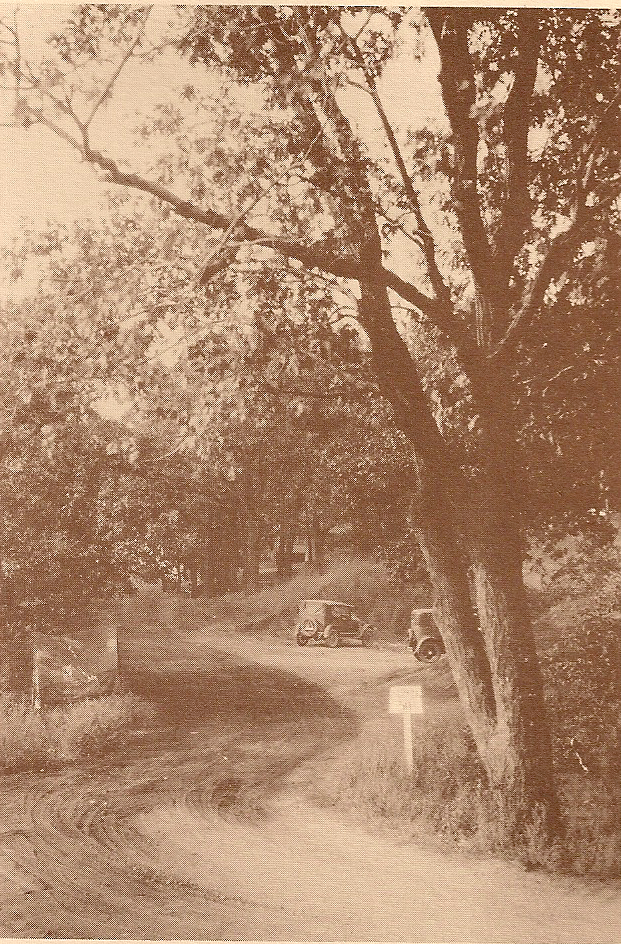 THE EARLY DAYS
THE EARLY DAYS
ILLINOIS TURNER CAMP
By Henry A. Glaser, Turnverein Eiche
Dedication: This book is dedicated to a dear friend and devoted Turner, Ed Elste.
Table of Contents
Chapter 1: Starting from Scratch
Chapter 2: We Have Growing Pains
Chapter 3: Food, Fun, Fellowship
Chapter 4: And Then Came the Cottages
Chapter 5: Fun Afloat
Chapter 6: Childhood Memories of Camp Life
Chapter 7: I Remember When
Chicago area Turner Societies in 1914, when Illinois Turner Camp was started.
|
Aurora Frisch Auf, Aurora |
|
Grand Crossing Turners |
|
Aurora Turners, Chicago |
|
Helvetia Turners |
|
Avondale Turners |
|
Lincoln Turners |
|
Central Turners |
|
Schweizer Turners |
|
Chicago Turn Gemeinde |
|
Socialiar Turners |
|
Eiche Turners |
|
Vorwaerts Turners |
|
Elgin Turners |
|
|
All rights reserved, contents of The Early Days may not be copied in whole or part without the written approval of the Illinois District Council.
Design, production and printing by Rudi Dian and Rich Schnell, Eiche Turners.
Published by the Illinois District Council.
Originally printed 1987
INTRODUCTION
For many years, while visiting with turner friends, many nostalgic and memorable incidents were brought up. I realized none of this was being recorded and many persons familiar with the camp from its inception are now gone. I decided to start (however late) to record those early days, thanks to the help of several Turners who could remember what happened.
Ed Elste, Wally Friese and I began turning at the original Vorwaerts Turner Hall at Roosevelt and Western in Chicago in the mid-1920’s.
I felt some semblance of a history should be recorded to give the “newcomer” an idea of how this all came about. Readers, I am sure, will realize the camp was built with love by men and women who gave their time and talents because they had the “Turner spirit.”
In this history I have taken you from the beginning of the camp to the time when many of us went off to college or our chosen field of employment.
I am grateful for having been a member of the Turner movement because it was a lovely girl from Eiche Turners who became my wife!
New members take an oath to uphold the precepts of Turnerism and pledge to help when asked to continue the cause. The camp was developed for us and our children. We owe more than dues and ground rental to our society. We have something great here. Nowhere in the United States is there anything comparable to our Turner camp. We are the envy of all Turner Societies. Let us not forget what the early camp pioneers began for us. There are Turners who are still giving their time. The Dining Room has been rehabilitated and the Bären Höhle has a new face. Retirees are cleaning, painting and improving what we have. Won’t you pitch in and help?
The author expresses his deep appreciation to the following for their contributions of information and photographs:
|
Erma Radtke Achtner |
|
Frank Havlicek* |
|
Alice Lang Dauer* |
|
William “Bill” Meyer |
|
Mildred Zimmer Divis* |
Herbert Moessing |
|
|
Emil Firestone |
|
Ann Trankle |
|
Al Graf |
|
Clara Zweifel |
* former campers
Chapter 1
STARTING FROM SCRATCH
It was in 1912 when Alfred Wild (pronounced wĭlt), the turning instructor of the Eiche Turners in Chicago, would take his Junior boys class on various overnight hikes. He had what is known in German as “die wanderlust” (the desire to roam).
In 1913, Turner Wild learned of a possible campsite near Cary, Illinois. He made several trips to the Dunbar Cattle Ranch on the shores of the Fox River to make arrangements for his class to camp there. It was in the summer of 1914 when he led the first group of campers.
They boarded the Northwestern train from Chicago to Cary, then hiked to the campsite near to what is now Cary Country Club. Driving along the access road to the current clubhouse, the campsite was on the left along the shoreline in a grove of oak trees. Small, two-person tents were used. Emil firestone, one of the early members of Eiche, relates how cowboys from the ranch rode their horses into camp to check on campers early each morning.
In those days there were thirteen Turner Societies in the Chicagoland area (see listing at beginning). The Turner Society was a closely knit family group and activity centered around the Turner Hall for gymnastic instruction and social life. Many societies conducted their meetings and gym classes in the German language. It is amazing that at the time of the founding of turner Camp, World War I was being fought in Europe! Members would attend one another’s social functions. It was natural for the camp to become a topic of conversation. In ensuing years, other societies began to “pitch their tents.”
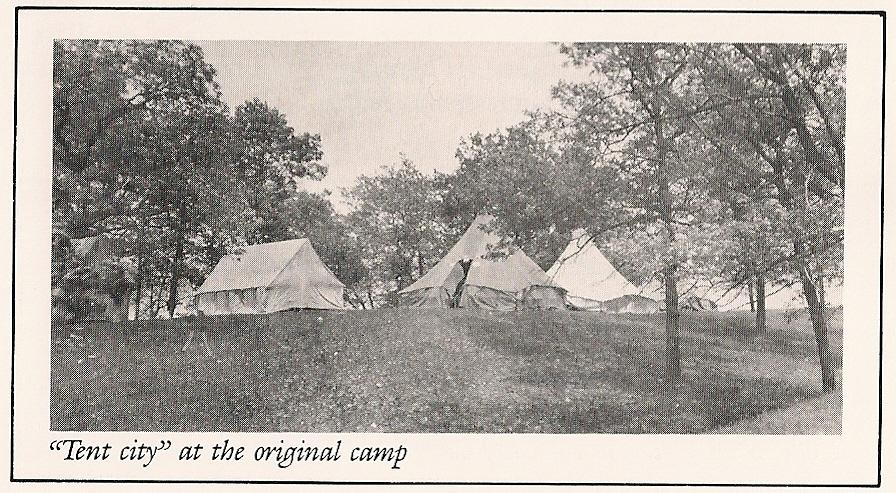
“Tent city” at the original camp
The only permanent building in the early camp was a dining room where the women did the cooking. The first dinnerware was enameled metal. As the camp grew, tents were either purchased or rented. They were the square Army tents with a high center pole. Two long white tents were purchased, one each for the men and women. It is believed the first tent rented went to Turner George Sonnenleiter, grandfather of the third generation George Sonnenleiter.
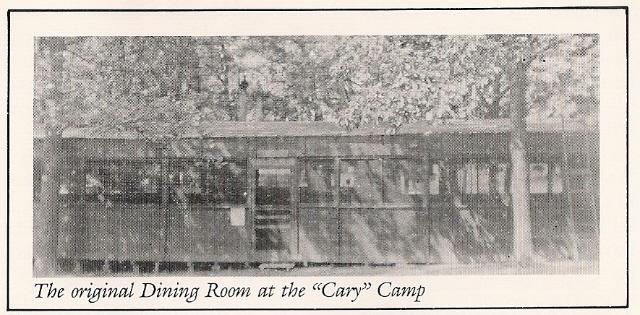
The original Dining Room at the “Cary” Camp
Research proved all did not go well in this idyllic spot. Very early in the camp’s existence a strong difference of opinion arose between Turner Wild and others, causing Turner Wild to find a different campsite.
He found one on the shores of the Kankakee River. Fortunately, peace finally prevailed and Turner history continued to be written at the original site where hiking, swimming and fishing were the principal activities.
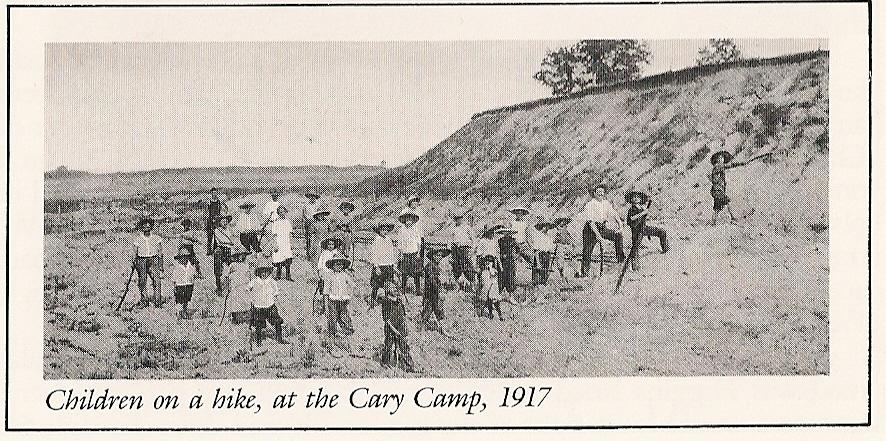
Children on a hike at the Cary Camp, 1917
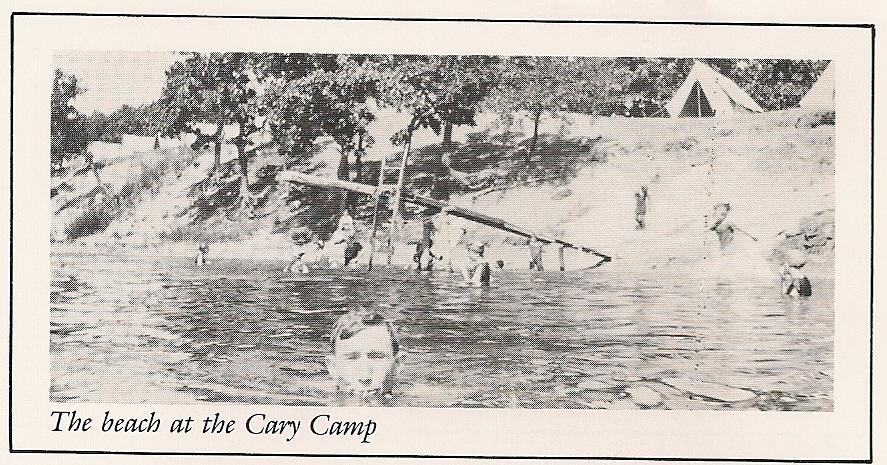
The beach at the Cary Camp
Chapter 2
WE HAVE GROWING PAINS
In 1919, the Illinois District purchased 36 acres of farmland on the opposite side of the river, downstream from the Dunbar campsite. That land lay east of the fence behind the present dining room, encompassing the area from the road to the river to the western edge of the present A-field and large parking lot. Not included were eight riverfront lots still owned by individuals.
When the change was made to the new campsite it became quite a challenge for train passengers. Fox River Grove was not a designated stop but campers arranged with the conductor to slow the train as they passed through so they could drop off their gear. They stayed on the train to Cary, walked back and picked up their gear and hiked the three miles to the camp. Now that was dedication!
Those fortunate to own autos usually drove out on a gravel road known as Northwest Road. My very early recollections of camp were an occasional trip in the early 1920’s, leaving the Lawndale area of Chicago very early on a Sunday morning. The food my mother prepared on Saturday was loaded on the left running board of our car, held in place by an expanding gate-like device between the mudguards. We traveled north through the city to Milwaukee Avenue, Rand Road, and then via “Northwest Road” to the camp. The trip was a challenge. We had neither improved roads nor durable tires.
As years progressed, the roads were improved. Another popular road was Higgins Road which was part gravel and part pavement. Campers would “turn right at the blacksmith” and drive through the small town of Schaumburg (now Woodfield Mall), or continue west to what was called “Cemetery Road,” which is now the junction of Higgins and Route 25. One of the popular topics of conversation with these intrepid campers was discussing the newly paved roads that were discovered.
An enterprising Turner, Ed Wagner, started a bus service from the railroad station. The bus was of polished wood paneling with oak trim, not the synthetic version that came later. Next came a river taxi—a boat which accommodated about ten people. Its engine was in the middle and it boasted a roof and open sides. It was hailed by passengers waiting on boat docks along the route. Service was from Fox River Grove to Algonquin and the unknown number of stops made it difficult to maintain a schedule. The camp was a popular vacation spot because it was close to home, well r5un, and quite inexpensive.
After the original purchase in 1919, land acquired by the Illinois District was quickly expanded. In 1925, 6the provide for the camp’s rapid growth and need for more cottage space, the farmland to the east was purchased. In 1926, 40 acres of land across the road was purchased. An additional 4 acres were purchased on the riverfront. This 39-acre site takes in the present pool area, the A-field and the parking lot east to the Venetian Gardens subdivision. Today we have 102 acres.
The first group of cottages on the new land were called Swiss Village, Flagpole Hill, River Front and Cicero.
Did you know the Illinois District once owned a golf course? In 1969, once again to forestall the advance of a subdivision to the west, the nine-hole par three Argyle Shores (18 acres) was purchased. The course was used about three years but became difficult to maintain, forcing abandonment.
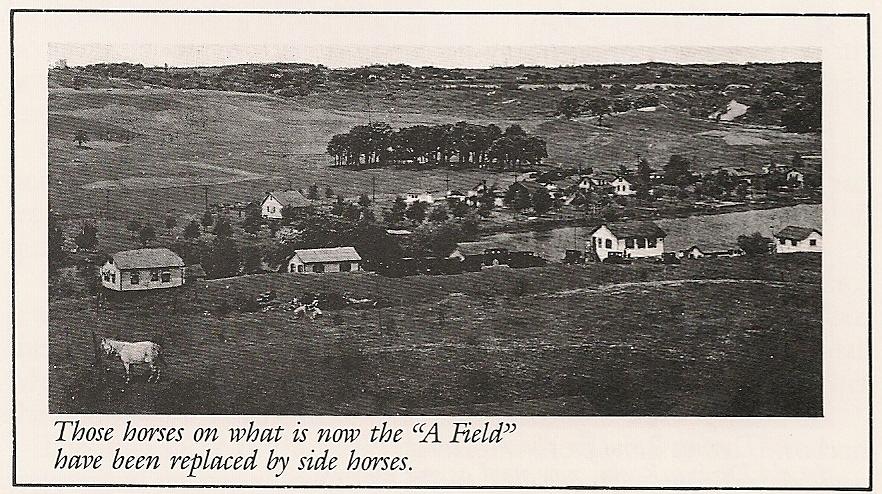
Those horses on what is now the A-field have been replaced by side horses.
Chapter 3
FOOD
FUN
FELLOWSHIP
When the move to the new camp was made, the dining room went along. Dismantled and floated downstream on barrels along with the tents, it was hauled by horse and wagon to a place near the tent area where it remained until 1923. Work was begun immediately on the construction of a larger dining room. The original dining room was again dismantled and hoisted to the floor level of the new building to become the kitchen of the present dining room.
Under the peak of the roof at the front of the building, stained glass still carries the letters “FFST,” meaning Frisch (fresh), Frei (free), Stark (strong), and Treu (true). It was made by Turner Max Eberhard of the Forward Turners.
An old locomotive bell was used to call the Turners to meals and special events. Ice was delivered regularly and hoisted to a cooler on the northwest corner of the building. In the southeast corner, a store was built to sell camping supplies such as tin wash basins, lanterns and sacks to fill with straw for bedding. It also served as our post office where mail was deposited in lettered slots. Candy and ice cream came later, creating a popular hangout for the children. The early operators of the store were the Max Zimmers and the Ernst Dietes. “Campers must provide their own blankets,” a sign read.
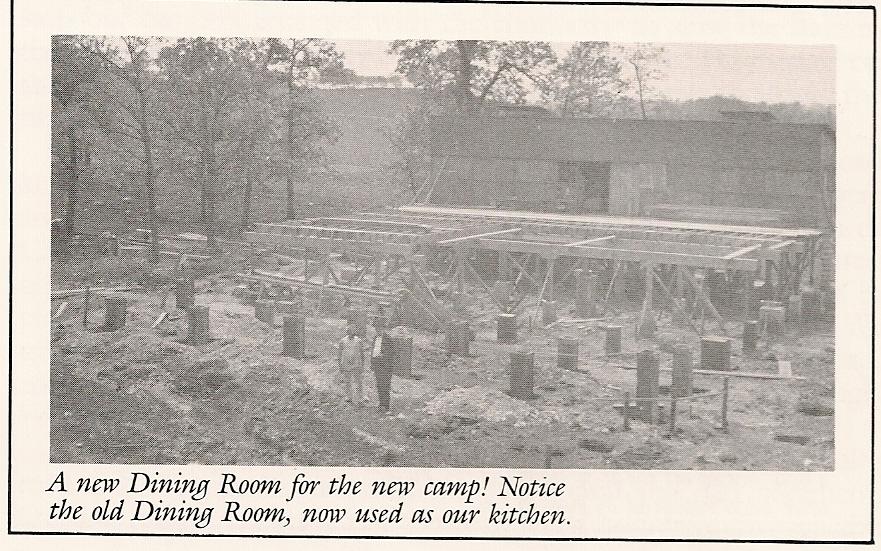
A new Dining Room for the new camp!
Notice the old Dining Room, now used as our kitchen.
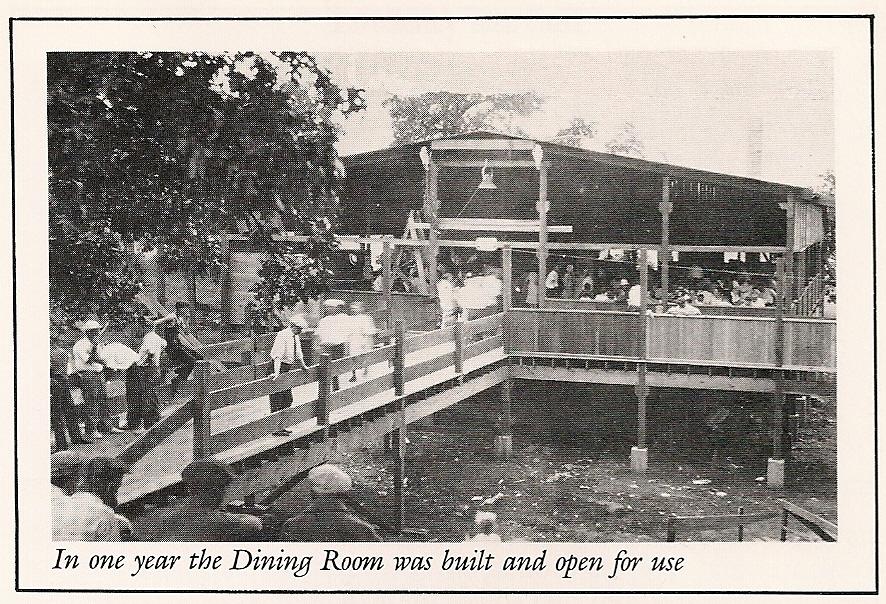
In one year, the Dining Room was built and open for use.
Food was served family style at long tables and benches. Meals cost $7.00 per week or $1.50 per day. Single meals were 50¢. Children under 16 ate for $4.00 per week with single meals costing a quarter.
Later on, the camp became a popular weekend ‘Mecca’. Some Sundays, as many as 600 meals were prepared by hired chefs and served by the ladies. High school students who washed dishes were paid $2.00 per week plus meals and lodging. The water supply for the dining room came from a spring across the road. When that source ran out, the well near cottage #98 was deepened. Two storage tanks and pump were installed.
The dining room was used on Wednesday nights for the weekly talent show which included songs, ski9ts and gymnastic acts. One of the elders of the camp regarded himself a magician and performed occasionally. He would announce, “I have here an empty box with nothing in it,” and proceed to produce a handkerchief therefrom. I remember Emil well and am chuckling to myself as I write this.
My friend, Henry Meyer, played the clarinet and I, the violin. I don’t think we ever finished a performance. We would realize how bad we were and break up laughing, along with the audience. It was all quite amateurish but most enjoyable.
Collections taken in on talent night paid for ice cream treats on hikes.
On Saturday nights, the room was used for dances. Henry Elsholz, the manager, hung lighted Coleman gasoline lanterns around the hall while we donned our best apparel. The music was provided by either the Art Warning or Frank Holubek Orchestra.
The final show of the year was held in the dining room. Bleachers were raised on two sides of the room. This was “the event” of the year and was held Labor Day weekend. The children gave gymnastic performances and received bronze, silver or gold medals, depending on the scores they accumulated throughout the summer.

1925 a “Porch” is added.
Events included demonstration of gymnastic abilities, swimming, astronomy and a written history of the camp. (I could use some of that information now.) I still have my medals!
One of the highlights of the show was the performance of the best gymnasts from the Illinois District. It was a thrill for all when the band played a stirring march and the gymnasts marched out in form-fitting whites. Emil Firestone, Bernie Brockmann, Otto Ellinger and Emil Preiss were in this select group.
Special acts were performed over the years. One that stands out in my memory was a take-off on an old classic film starring Nelson Eddy and Jeanette McDonald. Tree branches gave the illusion of a tree-lined stream as a canoe was pulled on stage with a rope and Josie Lange and her partner, Big Bill Buschert, sang a duet, “The Indian Love Call.” This typified the Turner spirit in those days. Nothing was too much trouble to make our camp more enjoyable. I was pleased to see a “reincarnation” of the “little Turners” at the 1986 final show. This was one of the stunts we kids did, only our “little Turner” led the children in singing.
After the show, everyone went downstairs to the rathskeller. That brings me to the story of how the rathskeller came about. When the dining room was built on heavy beams, the ground level was left open and the space used for winter storage. A group of Turners got together, leveled the ground area to the right of the present main entrance and enclosed it. Railroad station benches were brought in and a bar was set up.
It was realized this area could be put to better use, so once again the members pitched in. The walls were painted white and the beams stained. An artist from the Lincoln Turners, Dorthea Gutsmann, painted murals.

Efficiency test card
1928 Camp Pamphlet
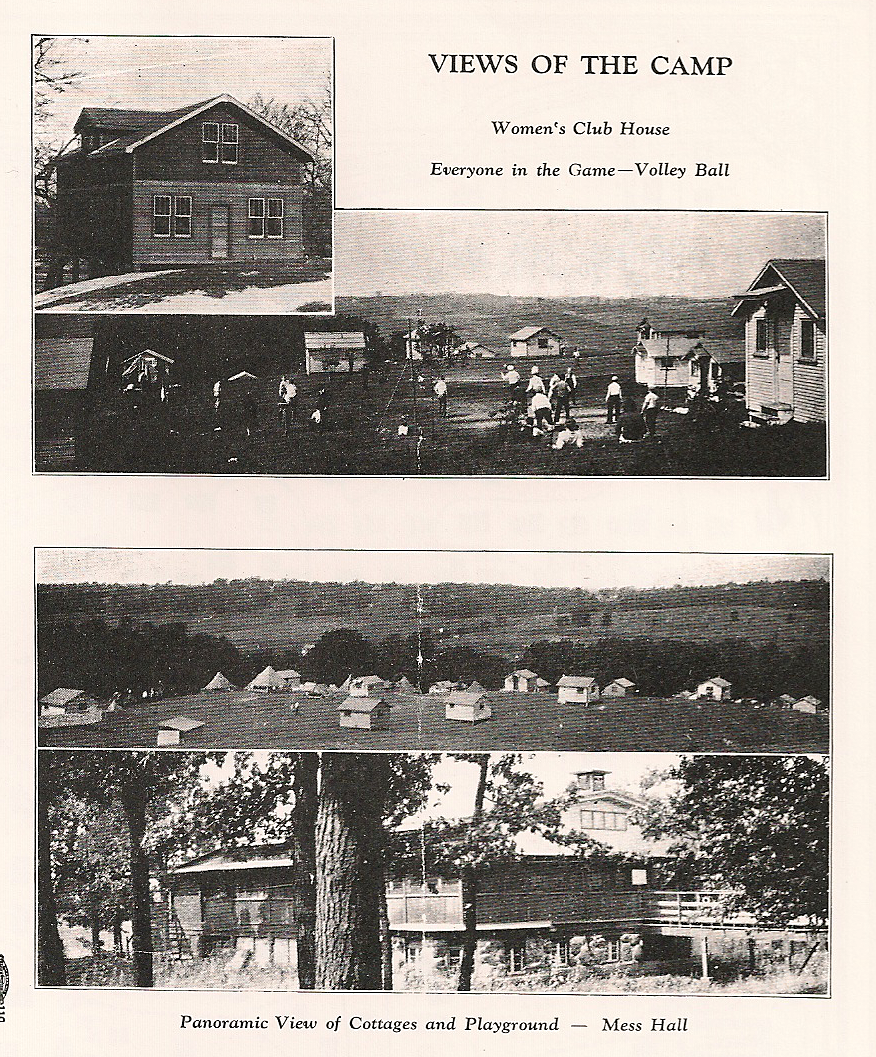
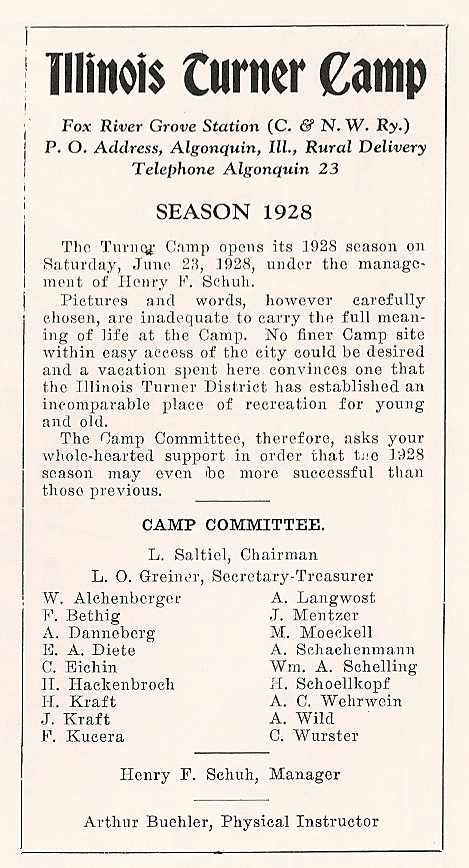
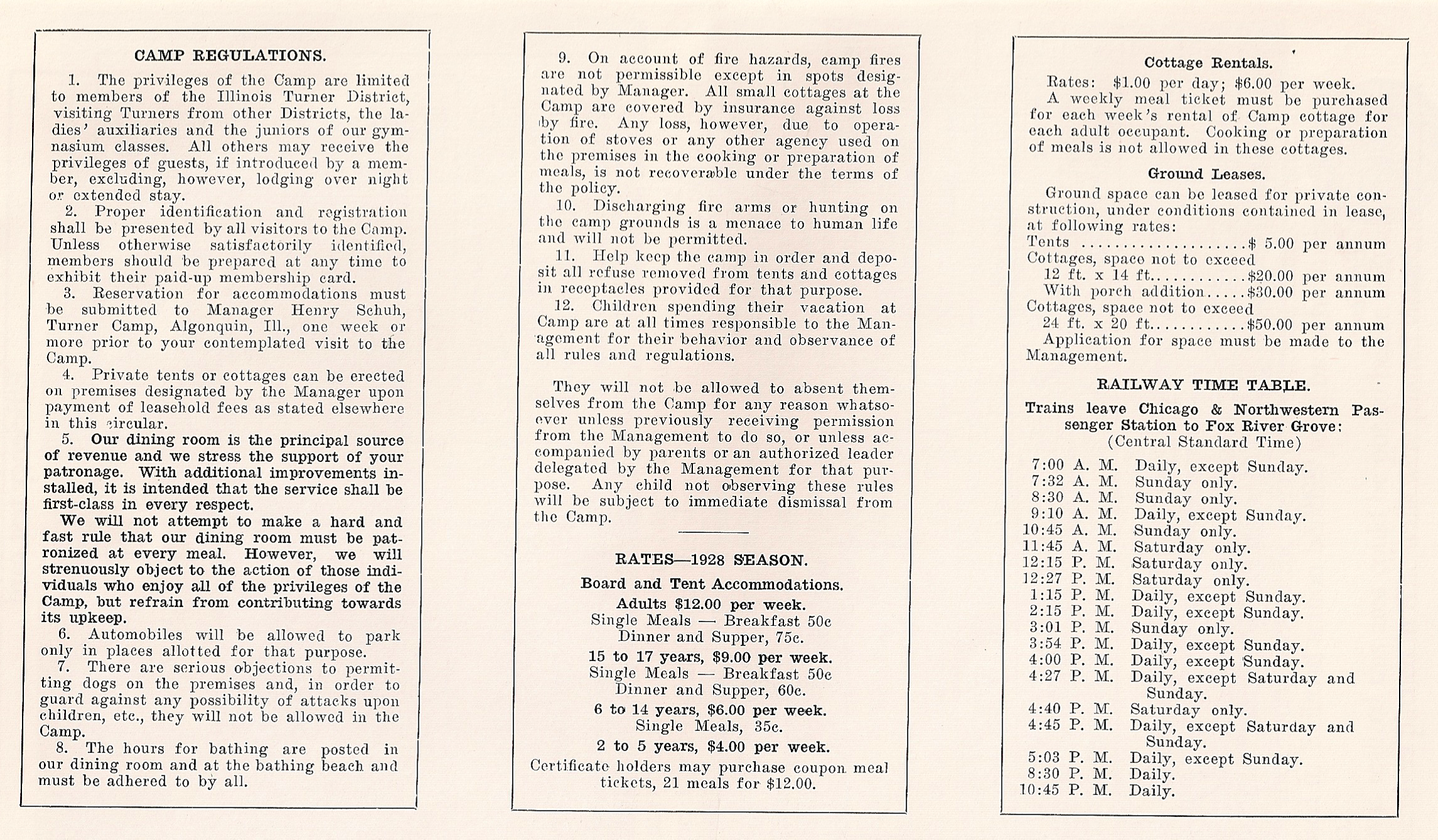
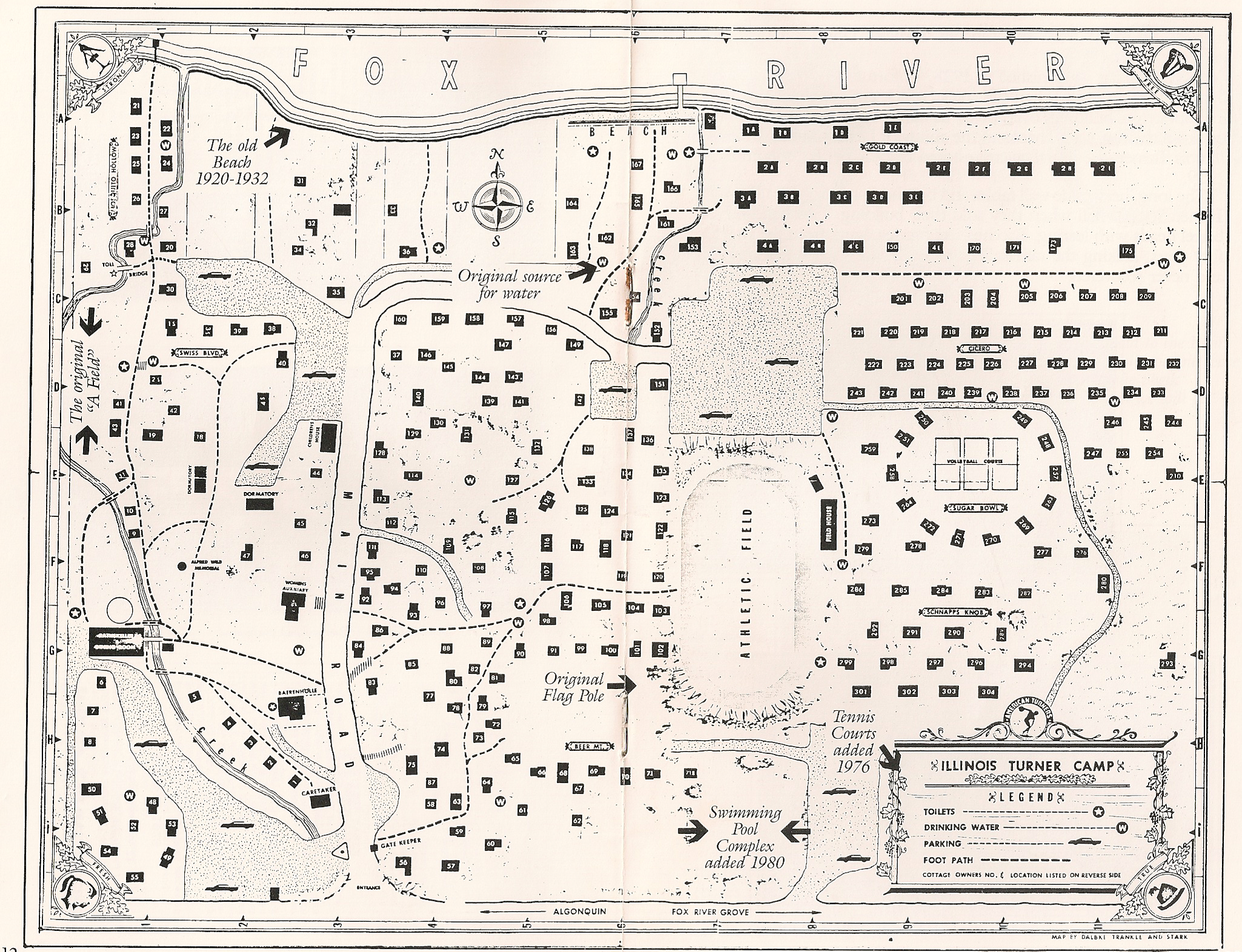
1965 Map of Turner Camp
The rathskeller was finished in 1928. Unfortunately, the walls were damaged by moisture when the creek, which ran openly at that time in front of the building, overflowed its banks and ruined much of the work on the east wall. Thanks to the ability of Dennis Subia, an active Illinois Turner, the murals were restored to near perfect condition in 1959.
The long, heavy side wall tables and benches came from the Forward Turner Society hall when they sold their building. Two hand-carved barrel heads with leering, Bacchus-like figures, hung from the wall for fifty years, making the rathskeller unique. These were stolen in 1972 and never recovered.
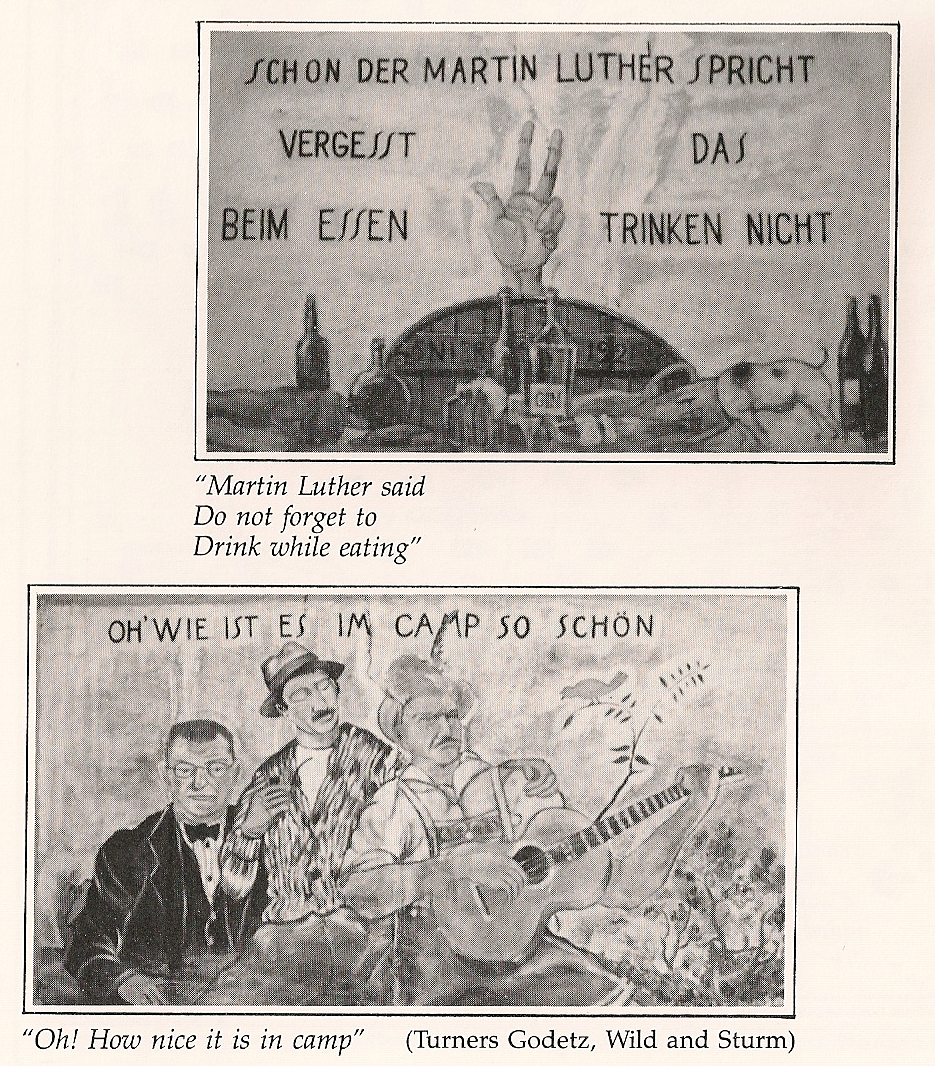
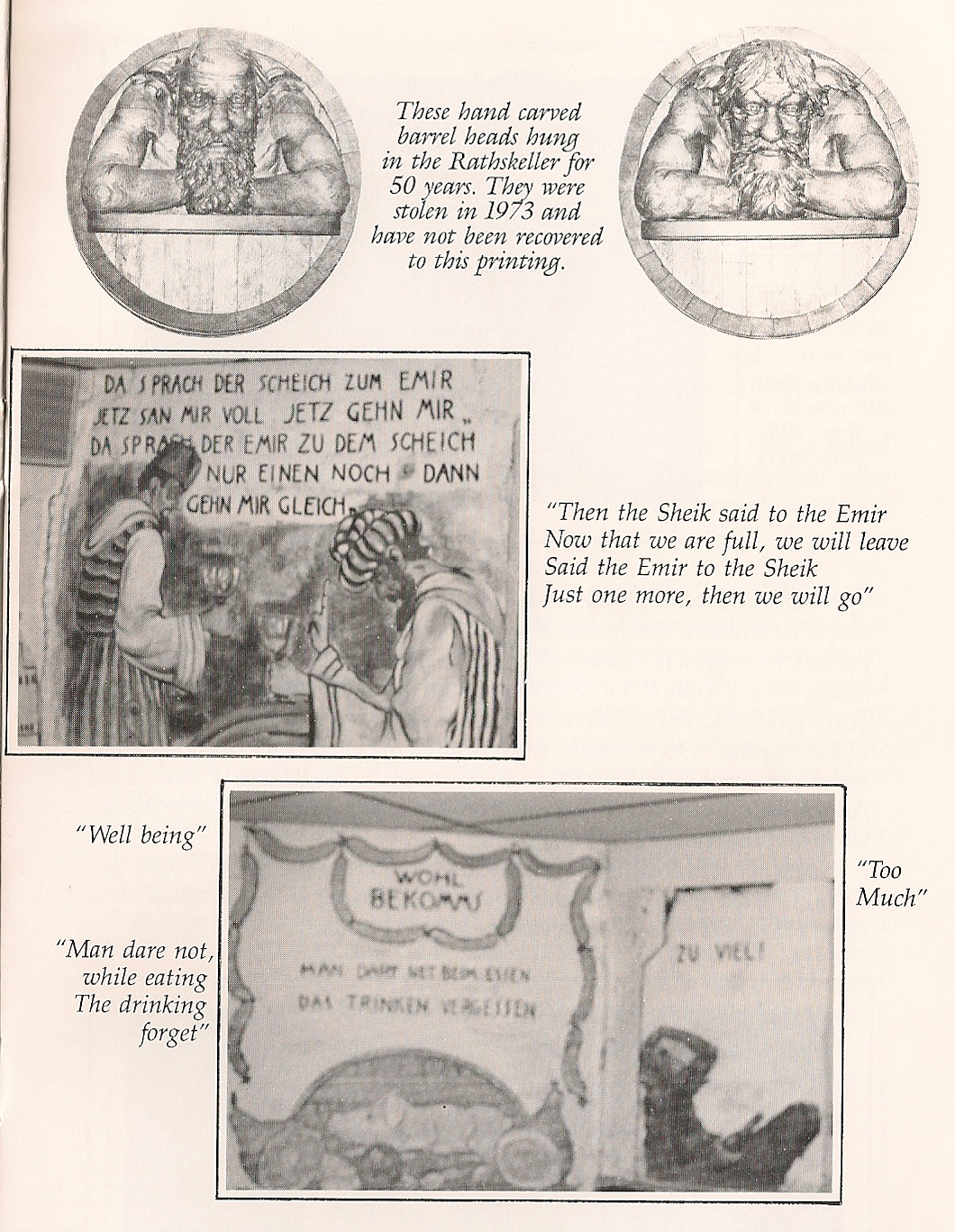
In 1925, the Baers of the camp started their own building. With the help of interested Turners, work was begun on their Bären Höhle (bear’s cave). Turners on vacation and weekend campers pitched in to work on the building. I remember, when I was 11, helping my father on the earth removal detail.
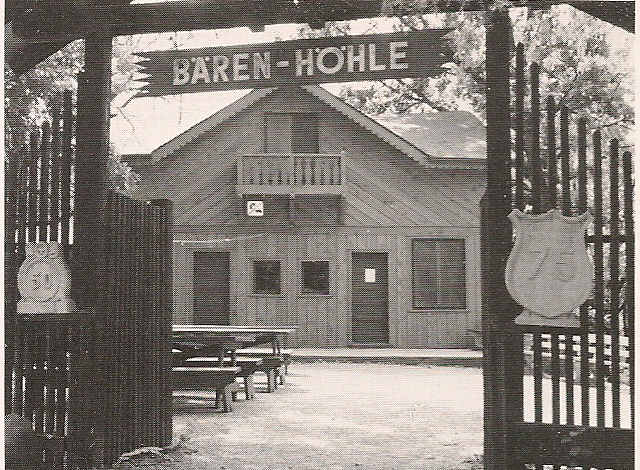
Bären Höhle, with remodeled front 1986, fence early 30’s
When the building was finished it was used for card games, meetings and a dormitory. Addition of a rustic fence created a delightful beer garden atmosphere. Colored lights were strung from the trees and music was supplied by Wilhelm Sturm and Ernie Schultz, guitars; Tony Godedtz, zither; Max Zimmer, mandolin; and my father, Adam Glaser, violin. Occasionally these musicians played for Sunday afternoon concerts. What nostalgic memories are invoked as I write this! Alfred Wild lived in a small room in the southeast corner. He would sit in his rocker on the front porch.
Not to be outdone by the Baers, the women of the societies decided to build their own clubhouse. This “Wald Klause” (forest cottage) was completed in 1931. Later a dormitory was added.
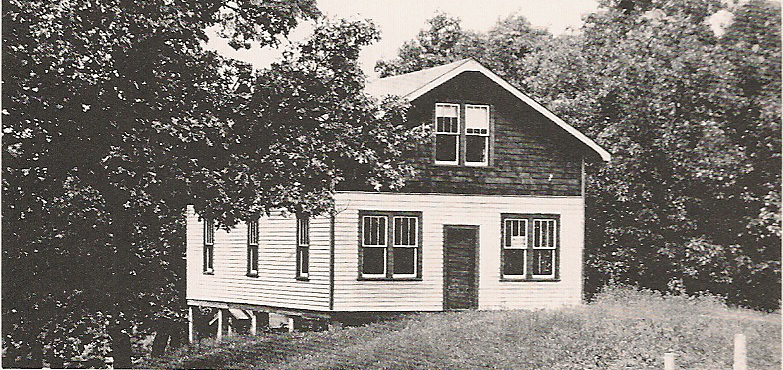
Waldklause – Women’s Clubhouse
Chapter 3
AND THEN CAME THE COTTAGES
Most of the tents were located in what is known as Swiss Village just to the north of the present dining room in a grove of oak trees. The tents were set up on a cleared area of ground and it was not unusual to have a stream of water flow through a tent during a heavy rain or perhaps have a frog share a cot.
To make it more comfortable, some tents were used over a raised platform with a frame around its perimeter for screening. Tent sides were raised for ventilation. During the winter, tents were stored under the dining room and as early as the first week in April, they were hauled to the campsite and raised in one day.
In 1922, a severe wind storm hit the camp during the night. Seventeen tents were blown down and damaged. Those campers who lost their tents were taken in by those whose tents were not blown down. When those accommodations were filled, the rest of the rain-soaked campers were directed to the dining room where straw mattresses were hastily provided, and there they spent the night. The heroine of the day was Bill Rieger’s Aunt Rose, who held the tent pole upright to allow the occupants to get out.
In 1924, Mrs. Josie Lange came down with pneumonia and her doctor forbade her to stay in a tent. Mr. Lange saw an ad in the Tribune for a portable cabin at the Fair Store (formerly a State Street department store). He purchased and set it up, much to the chagrin of the Camp Committee. That year, another storm hit the camp and although many tents were blown down, the portable cabin withstood the storm. This convinced the committee (and campers) of the merits of cabins.
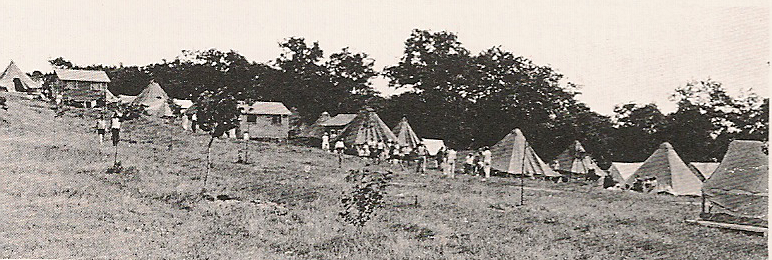
Cottages enter the scene of the rustic camp life about 1926
Plans were drawn up for a standard 12’ x 14’ cottage. The next year, seven of these cottages were built and are still in use near the caretaker’s home. The original Lange cottage, No. 88, remained in use by the Bob Meyer family.
Cottages became so popular that each ensuing year, more were built. Once the nine foundation holes were dug, cedar logs were inserted and the floor base was begun. After the floor was finished, the frame for the walls was made and raised into position. Six windows, hinged at the top, plus a door were installed. Roofs were covered with black felt paper and roll roofing.
It took only four days to complete a cottage and the original cost was about $250. Interior walls were the two-by-four framing and siding. It was not long before owners installed new windows, insulation and decorative paneling. Most of those early cottages had a washstand outside the door which held pails, water and a basin. Wells were dug in several locations throughout camp and hand pumps were used to draw the water.
In later years, permission was given for the addition of a ½ room, 8’x12’, and a 7’x12’ porch to each cottage. Large three-room cottages were built along the riverfront.
Originally, all meals were to be eaten in the dining room but that was soon ignored. As a youngster, I remember walking to the dining room for breakfast and catching the aroma of bacon and eggs wafting from a cottage. My mother would say, “Mmmm, they are cooking in their cottage!” It wasn’t long before were doing it, too.
There were daily visits from a milkman, baker and iceman from nearby towns. Can you imagine carrying a 100-pound chunk of ice over these hills?
Meals were prepared on Coleman gasoline or kerosene stoves. One morning, a gust of wind blew the curtain over our kerosene stove and the curtain ignited. My father grabbed the flaming curtain and dashed outside with it. When one considers the number of years of cooking that was done on these stoves, it is a wonder we lost only three cottages to fire and one of these fires was caused by a carelessly placed cigarette.
The rugged camp life was giving way to modern facilities. In 1951, a committee chaired by Nat Pitzele, was formed to look into the extension of electricity to the cottages. It had been in the main buildings for several years. After making the necessary surveys, a contract was let and underground service was provided where possible. What began as tents became cozy, air-conditioned cottages with modern refrigerators and stoves. No longer is heard the call of the iceman, baker or milkman!
Years ago, there were only strategically placed wood outhouses. I remember when Wilhelm Sturm and a friend rose to each on a horse-drawn wagon each Monday morning for cleaning. As his friend handled the reins, Wilhelm would play his guitar and sing. As a boy I thought I could “help” the cleaning by dropping a lighted match down the hole. The fire took care of the paper in quick order and started on the wood building. Thank goodness I had enough of my friends nearby. We quickly grabbed buckets. While one pumped furiously the others filled their buckets and put the fire out! With the coming of the water system, a septic system replaced those old toilets.
Chapter 5
FUN AFLOAT
The old river beach was soon unable to accommodate the weekend crowds. It was not suitable for expansion because of its proximity to private homes. In 1931, a new site was selected. What once was a wild, overgrown marshy area was turned into an attractive beach. A seawall was built and, in the winter, load upon load of sand was dumped on the thick ice. When the ice melted, the sand created a fine beach. It was here many children learned to swim or improve their water skills with the help of Frank Warga, Rudy Schmidt and others.
A grassy slope beside the beach provided an excellent viewing area for swim meets. Highlight was the one-mile competition. The swimmers were taken by boat to a point midway to Fox River Grove. The boats then followed them back to the finish line.
It was often Mike Valentine who won the men’s competition and Dorothy Schiller from Lincoln Turners dominated the ladies events. Dorothy went on to represent the United States in the 1936 200-meter breast stroke Olympic team.
Once a year a grand water carnival was held. Each Society created its own float by lashing boats together for a platform. Society members went all out to have a float and ideas ranged from serious to comic. The floats were kept upstream in the darkness. When their turn came, they were guided into the brilliantly lighted area. The entire camp population turned out for this event plus many Fox River residents who would anchor their boats in the river to see the show.
In 1955, locks were installed in the Fox River at McHenry, Illinois. This allowed the river traffic to increase greatly. It was an August evening in 1960 when tragedy struck. Gary Elste swam into the path of an unlighted motor boat and was killed. This prompted a move for safer swimming. A Swimming Pool Fund was begun and collections were made for many years. With additional funds from the Illinois District, work commenced on a designated site in 1979. Many Turners gave of their time and abilities to keep the professional costs down and the pool was opened for swimming in June of 1980.
Chapter 6
CHILDHOOD MEMORIES OF CAMP LIFE
For those who missed the experience of the early days at camp, spend some time with me and my Turner friends.
As soon as school closed for the summer, many children and their mothers were taken to their camp cottage and a large group of children were housed in the dormitories. Naturally, a friendly rivalry arose between the “dorm kids” and the “cottage kids”.
After breakfast, we would dash down near the Swiss Village for our gym classes. Before I started to go to camp, classes had been conducted by Turner Ed Hall from the Socialer Turners. When I started, our teacher was Emil Preiss, a very stern disciplinarian, who is still well remembered by his class members. Rudy Schmidt was lifeguard and water counselor. There were as many as 100 in the class in a small gym area.
After a free hand warm-up, we went to each piece of apparatus in groups for a workout. The next activity was swimming at the old beach. There was a massive, two-tier diving platform and accomplished divers put on many a show for the weekend crowds.
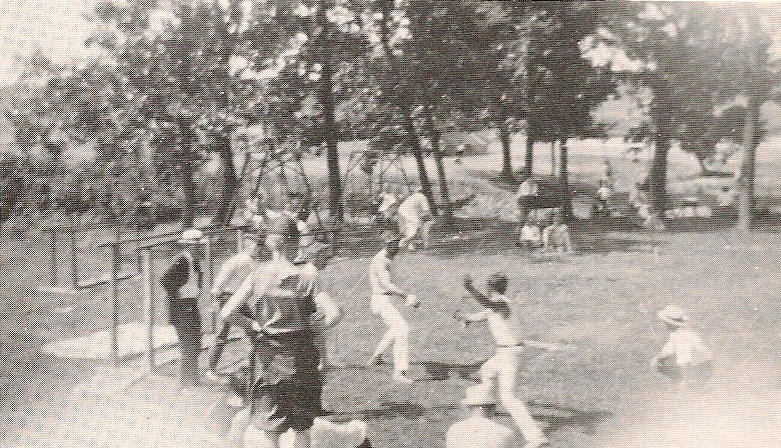
A view of the first “A Field”
After lunch, the next (but not most popular) activity was singing lessons were we practiced songs for the Wednesday night talent show. We were taught the German songs “by rote”. We did not know what we were singing. Now I realize what the lyrics to “Die Lorelie” meant and still remember the words.
After singing, we were free to do as we wished. There was always a ball game. One day, a friend and I took the wheels from a coaster wagon and, using two-by-four framing, built a car. We installed a seat and footrest and steered it with a rope. We started at the highest point of the camp on flagpole hill. This became a popular sport and many races were run. We would wind our way down between the cottages to the old beach. Ed Elste would usually win because he had the largest wheels.
A few of us got together and dammed the creek across the road for an ‘au natural’ swimming pool in very cold water. One requirement was to chase the cows from “our pool” before swimming.
Monday morning there was no gym. It was “cleanup” day. After the busy weekend it was up to us kids to pick up around the Dining Room and the adjacent area. Friday was hike day. We would gather near the entrance of the camp and hike to either Algonquin, Fox River Grove, or the Norge Ski Hill.
One of the best times was the annual trip to the Chicago Tribune Camp near Algonquin for a baseball game. The Tribune sponsored a camp for underprivileged children. As I recall, we usually beat them.
When we returned from a hike, we would all gather dead branches and pile them near where the Wild Memorial now stands. At night we would enjoy a great bonfire. The candy store was busy selling marshmallows. Many fathers came out on that night for the weekend. Wilhelm Sturm with his guitar led the singing. Turner Sturm had a life-size mannequin of a woman in a long dress and large hat. Although he was well up in years he would wildly dance with his Rosa—singing “Rosa; Rosa wie bist du so schöen.” (Rosa you are so nice.) Truly, those were enjoyable days.
During the week, we would make up skits to be put on at the Wednesday night talent show. More fun than quality.
Those were happy times for the mothers at camp, too. Their Wald Klause was the center of activities—card games, bunko and an occasional “kaffe klatsch” (afternoon coffee, sweet rolls and gossip).
As Labor Day approached, we realized we would soon be going back to school and our summer fun would end. However, we looked forward to the fall weekend ‘spiess-braten’ (barbecue) sponsored by a Society, much as we do today. When it was the Social or Lincoln Turners weekend, we were treated to a Sunday performance of their fife, drum and bugle corps. Johnny Weigelt sure beat a mean drum! We were all thrilled by the stirring music.
During the winter, some of the more hardy Turners went to the camp to skate on the river or ski and toboggan on the natural hills. I remember going down on a toboggan and crashing into a cottage that got in the way. No damage was done except for the dishes we heard crashing behind the wall we hit!
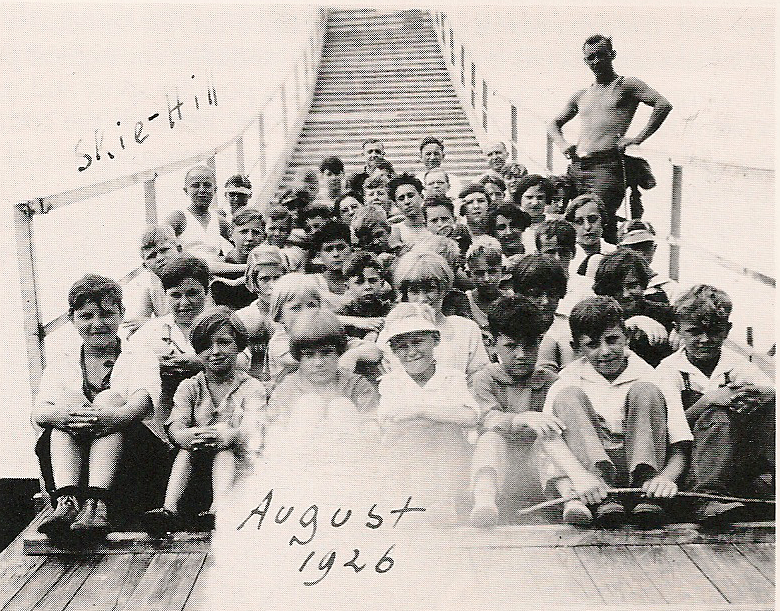
The annual hike to the ski slide. August 1926, Instructor Emil Preiss
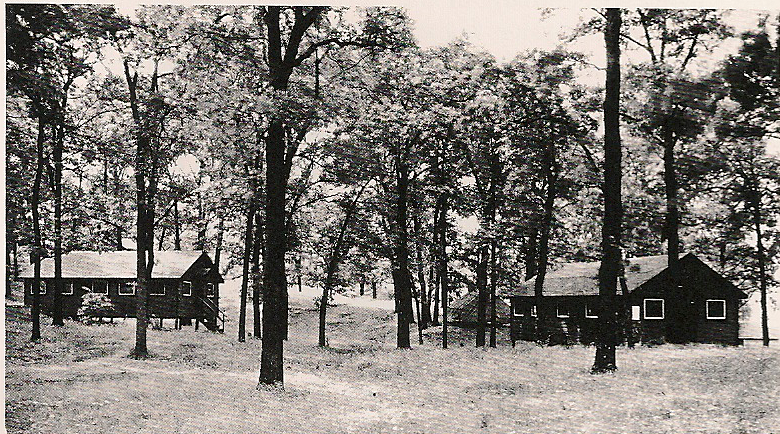
The Children’s Dormitories
Chapter 7
I REMEMBER WHEN
Before I close these chapters, come take a walk around the camp to some of the nostalgic points of interest. Let's start at the hill to the right of the main gate from which the sane was taken for use in the concrete throughout the camp. That hill is now overgrown with trees and bushes. As kids, it was great fun to run and jump from the crest of the hill into the sand pile below.
Let's proceed toward the dining room. The small building to the left at the foot of the bridge was the office where Minnie Gumminger kept all the financial records and sole the meal tickets. It's nice to know it is being used again after many years of disuse.
Now, as we walk toward the Wild Memorial, I remember when the flat area was a high grassy knoll where people would sit after a big meal and contemplate the climb to their cottage. This is the area where the bonfires were held.
On to the Bären Höhle. There you will see many limestone carvings. These are the work of Carl Wurster, a stone mason by trade. There are others at his former cottage No. 97, and at the water fountain in back of the cottage.
Let's walk down the road past the women's clubhouse and children's clubhouse (built in later years) where my children played. To the left is Swiss Village where many of the former Swiss Turnverein members live. I remember summer nights when that area was lighted with gasoline lanterns and delightful Swiss singing and yodeling filled the air.
Down the road in the vicinity of cottage No. 162, once stood the original source of water for early campers. It was an artesian well and campers dipped the water into their buckets. Later, a hand pump was installed.
Now, let's walk up to flag pole hill. The original flag pole stood atop the hill in front of the Radtke cottage, No. 102. Years ago, the "in" thing to do was to carry a rock or two for the base of the pole. It was from here we started our cart races and skiing.
From this vantage point we learned the names of many constellations for the efficiency test. Also from here, many couples did their own star gazing. Once a year the cottage owners on flag pole hill would have a "wine-fest". On a Saturday night, long tables would be laden with food. Colorful candle-lit lanterns added to the festivities. In the center of the table a large bowl held the "schorle-morle", a white wine mixed with ginger ale and seltzer water with strawberries and other fruits floating on top. My parents enjoyed themselves and so did I—I got to stay up late.
From the knoll we could see the trains crossing the bridge in Fox River Grove and at night we could see the Lindbergh beacon atop the Palmolive Building, now the Playboy Club. The land purchased in 1920 was a hilly area for the most part barren of trees. As the cottages were built, the owners planted trees. This is why we live in a beautiful forest.
The A-Field below was the pasture land of the Stanek family farm. His farm and the one to the west, which belonged to the Vokac family, were the two sources of milk before the advent of deliveries. Back then, Turners with their quart aluminum pails would walk each evening to the farms for the next day's supply at ten cents a quart.
We now have 265 cottages, a complete A-Field gymnastic facility and a water program in our pool. What continues to be a happy vacation spot is now also a delightful retirement haven.
The land across the road was originally barren of trees. The camp acquired hundreds of pine seedlings from the State of Illinois. Unfortunately, in our zeal to get them in the ground, we planted them too close. The land was used for dormitories which proved impractical and were abandoned.
The river below (what you can see of it) was once quite clean. Many areas along the shore were beautiful lily beds. The only motor boats on the river belonged to fishermen. Most cottages in the camp were supplied with ash trays and soap dishes from the shells of the fresh water clams for which we dove.
A friend and I took a canoe trip, attempting to reach Burlington, Wisconsin. To keep our food supply (a smoked butt) cool, we let it drag in the water from a rope.
Now we are at "the top of camp". Look it over. I hope you can appreciate how this all started!
Songs we sang:
Turner Marching Song
With heads erect,
and flashing eyes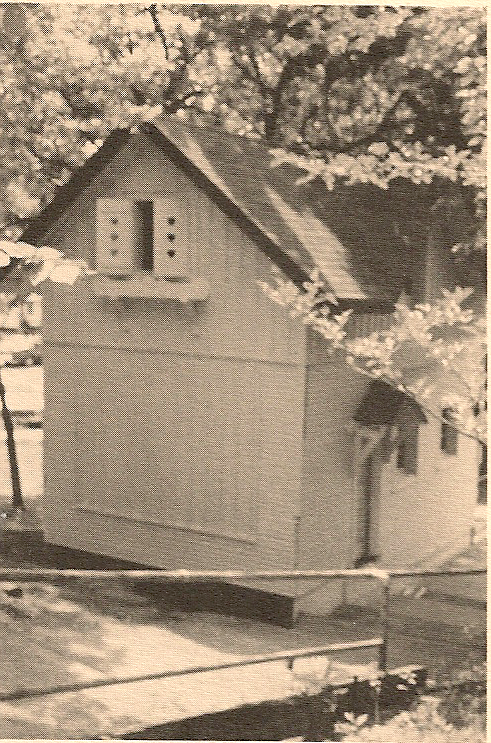
We march upon the field.
With hearts so true,
and courage bold,
We fear not, nor shall yield.
Our sports, our games,
our races, too
Are more to us than play –
They bring us health,
and strength, and joy,
Lead us, the Turner way
For our great cause
we are united,
Hip, hip, hoorah,
Hip, hip, hoorah!
And we stand always undivided,
Hip, hip, hoorah,
Hip, hip, hoorah, HOORAH! shown here remodeled 1985-86
If You Want to Be a Turner
If you want to be a Turner,
Just come along with me
By the bright shining light,
By the light of the moon.
If you want to be a Turner,
Just come along with me
By the bright shining light
of the moon.
By the light of the moon,
By the light of the moon,
By the bright shining light,
By the light of the moon.
If you want to be a Turner,
Just come along with me
By the bright shining light
of the moon.
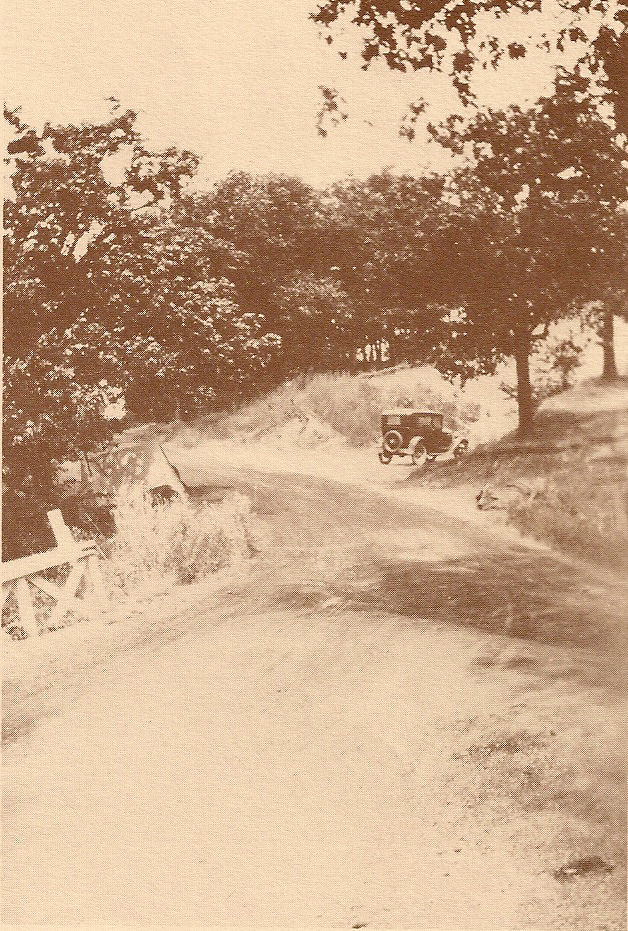
"We Are Tenting Tonight"
(on the old campground)
A Civil War song and a
Favorite of Alfred Wild
German Songs:
"Die Lorelei"
"Roesslein"
"Warum ist es im Camp so Schöen"
(Why is it so nice in camp?)
"Ich bin ein Musikant,
und ich kum von Schwabenland"
(I am a musician,
And I come from Schwabenland)
"Ich kan auch spielen,
auf meine violine"
(I can play the violin,
drum, horn, piano, etc.)
The sounds of the instruments
and appropriate hand motions
accompanied the song.
Entrance to Turner Camp, circa 1928


